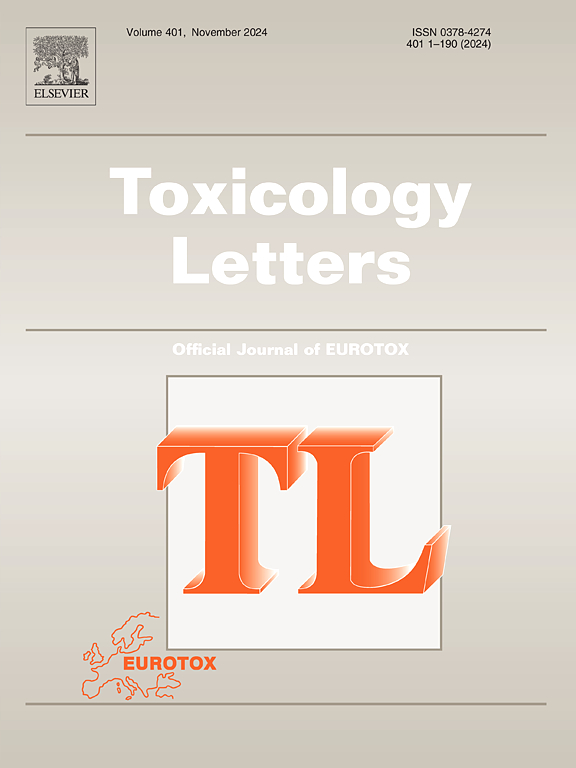11种双酚类似物对秀丽隐杆线虫的毒性比较
IF 2.9
3区 医学
Q2 TOXICOLOGY
引用次数: 0
摘要
双酚类似物被广泛用作双酚A (BPA)的工业替代品,包括在水瓶、食品容器和日常常见的收据中。然而,目前对这些替代物质没有具体的规定,也缺乏关于其有害影响的报告。在这项研究中,我们使用秀丽隐杆线虫模型检测了11种双酚类似物,包括BPAP、BPB、BPC、BPC2、BPE、BPG、BPM、BPP、BPPH、BPZ和TBBPA在1 mM浓度下的毒性。我们的研究结果表明,几种双酚类似物,尤其是BPB、BPC、BPE和BPG,显著提高了胚胎期和L1幼虫期的致死率。此外,观察到BPAP、BPB、BPC和BPG的发育迟缓,达到成年的动物比例减少。在生殖毒性方面,我们发现BPAP、BPB、BPC、BPC2和BPG降低了产蛋量。此外,暴露于这些类似物会显著缩短秀丽隐杆线虫的寿命,尤其是BPAP、BPB、BPC和BPG,这引起了人们对它们对衰老的潜在影响的担忧。这项研究表明,它们对发育、繁殖和寿命有潜在的有害影响。本文章由计算机程序翻译,如有差异,请以英文原文为准。
Comparative toxicity of eleven bisphenol analogs in the nematode Caenorhabditis elegans
Bisphenol analogs are widely used as industrial substitutes for Bisphenol A (BPA) and are included in water bottles, food containers, and receipts commonly encountered daily. However, there are currently no specific regulations on these substitute substances, and reports on their harmful effects are also lacking. In this study, we examined the toxicity of eleven bisphenol analogs, including BPAP, BPB, BPC, BPC2, BPE, BPG, BPM, BPP, BPPH, BPZ, and TBBPA at 1 mM concentration using the C. elegans model. Our findings revealed that several bisphenol analogs, most notably BPB, BPC, BPE, and BPG, significantly increased lethality in embryonic and L1 larval stages. Additionally, developmental delays were observed with BPAP, BPB, BPC, and BPG, with a reduced fraction of animals reaching adulthood. Regarding reproductive toxicity, we found that BPAP, BPB, BPC, BPC2, and BPG reduced egg production. Furthermore, exposure to the analogs significantly shortened the lifespan of C. elegans, particularly with BPAP, BPB, BPC, and BPG, raising concerns about their potential impact on aging. This study suggests their potential harmful effects on development, reproduction, and longevity.
求助全文
通过发布文献求助,成功后即可免费获取论文全文。
去求助
来源期刊

Toxicology letters
医学-毒理学
CiteScore
7.10
自引率
2.90%
发文量
897
审稿时长
33 days
期刊介绍:
An international journal for the rapid publication of novel reports on a range of aspects of toxicology, especially mechanisms of toxicity.
 求助内容:
求助内容: 应助结果提醒方式:
应助结果提醒方式:


